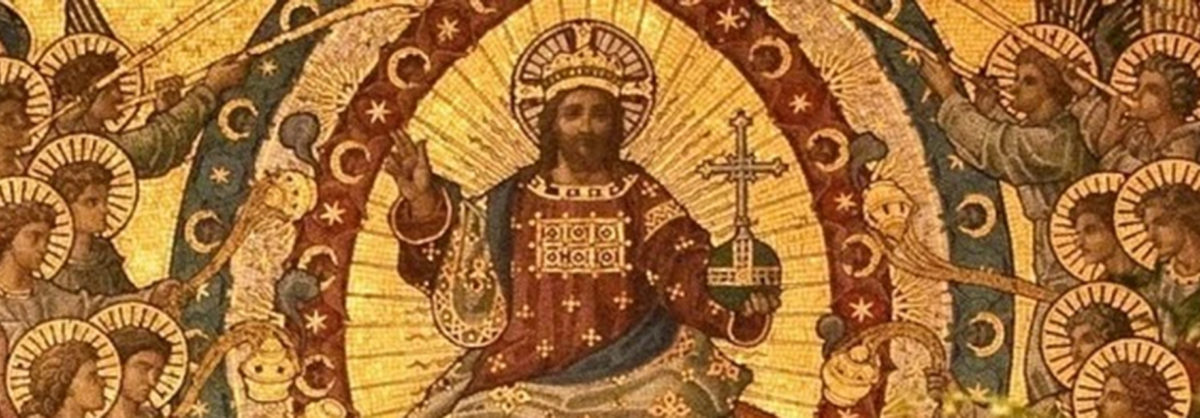The Feast of Christ the King was first proclaimed in 1925 by Pope Pius XI. Jesus Christ, Pius taught, “has necessarily supreme and absolute dominion over all things created.”
Christ’s authority, the pontiff insisted, is not just over Christians, but over all people, at all times, in all circumstances. Christ rules by right in our churches and our sanctuaries, but also in our public squares. He is not merely a private king, but one whose force ought to be felt in society itself.
This should rock our world. For we are Americans, the first ones to throw off the yoke of a distant monarch and begin governing ourselves. We don’t follow an absolute ruler. We make up our own minds, sifting the truths for our own personal creeds. We instinctively resist any sort of kingship.
Moreover, if we are honest, letting Christ have absolute authority fills us with more than a little fear. “Submission to Christ” suggests a life full of rich possibilities hijacked for narrow, religious purposes. Anyone who goes this way becomes a laughingstock to others, a fanatic even. We must resist!
But the promise, the amazing promise, of the Feast of Christ the King is that Jesus Christ is the very source of the human fullness I most prize. In submitting to him, nothing of who I am will be diminished. Indeed, every good possibility in me will be recovered, redeemed, and fulfilled in Christ.
Such fulfillment shows clearest in the saints, in whom submission to Christ produces an audacious capacity for action, a creative energy that attracts even unbelievers. These are not madmen or crazies, but human beings whose liberation is at hand. Such is the witness of St. Elizabeth Ann Seton, who, as an American, knew only too well the meaning of submitting to this King.
The newly-widowed Elizabeth first met the Catholic faith in Italy. Won over by the splendid beauty of the churches, the serene comfort of the sacraments, and the companionship of her Italian friends, she returned to America all but convinced that she should convert. But there she was met, assailed even, by arguments from her Episcopalian friends. Her Italian friends soon responded. Elizabeth found herself in the center of a theological tempest, pitching back and forth between two different camps. Desperate to chart a path forward for herself and her children—for all five little ones depended on her—she weighed and re-weighed the arguments, fine arguments wielded by worthy men. For months, she struggled: what was to be the path?
Finally, determined to find an answer, Elizabeth went to the Episcopalian church where she normally took communion. As she rose to pray, ready to enter wholeheartedly into the service, she found that she could not. She was suddenly aware that something, Someone, was missing in the symbolic ritual. She could not find Christ. And she knew full well where he was, hidden under the guise of bread and wine—very close, in nearby Saint Peter’s. Elizabeth at last let her heart speak, let her heart cry out in its need. And Christ came toward her.
Later that night, she had a second experience. Overwhelmed by her heart’s cry, she permitted herself to pray, and she became immediately conscious of another person: Mary. Elizabeth, always pained by the early loss of her own mother, had felt a wave of comfort praying before the image of the Madonna while in Italy. Now the warmth came flooding back. “I knew a renewed confidence in the blessed Virgin,” she later confessed.
The moment was simple and decisive. She would go toward Christ and Mary. She would become a Catholic.
How did Elizabeth Ann Seton make this decision? How did she yield herself in this moment, after so much wavering and uncertainty? The way forward, she found, was not in her own reckoning, not in her carefully crafted version of who she could or would be. It was by becoming aware of her heart’s real needs, deeper than her calculating mind could know. Indeed, in this moment Elizabeth was no knower, no self-made woman. She was rather the one known, the one recreated in Christ.
When she received her first Holy Communion only a few weeks later, she confessed, “It seemed to me that my King had come to take his throne, and instead of the humble, tender welcome I had expected to give Him, it was but a triumph of joy and gladness that the deliverer was come and my defense and shield and strength and salvation made mine for this world and the next.” Christ had conquered her.
In her moment of need, Elizabeth Ann Seton was awakened once again to things that are so human, so normal, as to seem banal: the need for the immediacy of God’s presence, which is fulfilled in our daily Bread, and the need to know love and belonging in the arms of a Mother. In this extraordinary ordinary moment, she yielded all of herself. She let herself be ruled by Christ, the King, and in this way she shows us, her fellow Americans, where liberation must begin: in Him.
LISA LICKONA, STL, is Assistant Professor of Systematic Theology at Saint Bernard’s School of Theology and Ministry in Rochester, New York, and a nationally-known speaker and writer. She is the mother of eight children.
This reflection was previously published. Click here to view all Seton Reflections.
Image: Creative Commons
